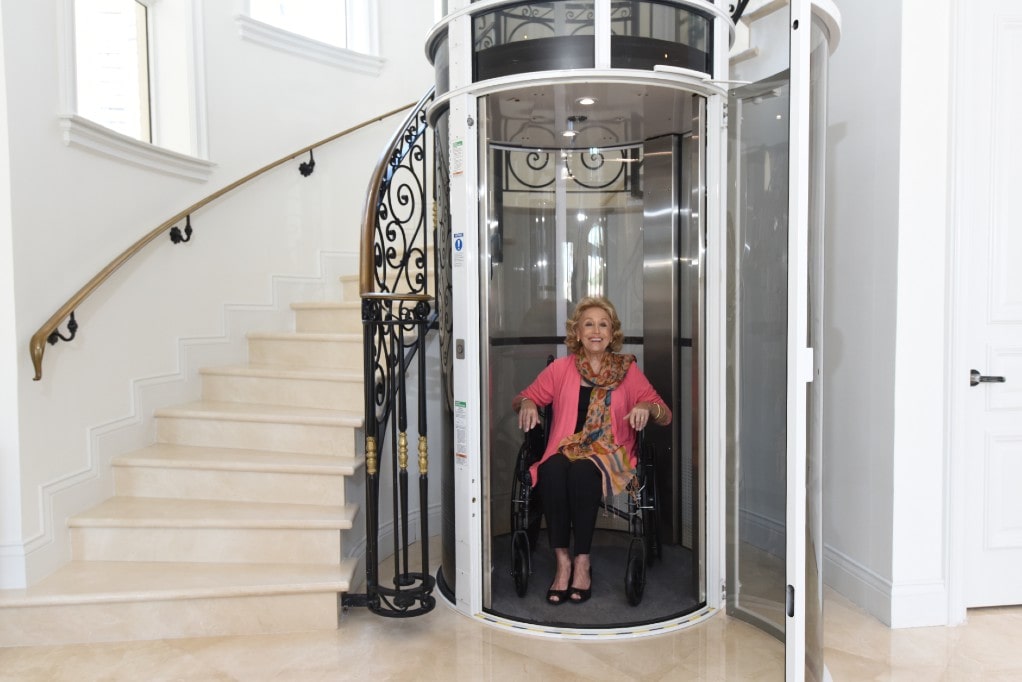Exploring the Globe of Elevators: Common Concerns Dealt With by Various Lift Devices
As we browse through the upright transport systems of modern structures, elevators attract attention as an indispensable part of our everyday lives. However, behind their smooth operation exists a world of detailed mechanisms that can occasionally come across challenges. From hydraulic lifts to traction systems and machine-room-less styles, each lift type includes its set of typical concerns. Comprehending these obstacles is vital for ensuring the smooth performance of these vital systems. Allow's discover the complexities that underlie the procedure of elevators and the prospective concerns that can occur, losing light on the elaborate internet of lift systems.
Hydraulic Elevators
Hydraulic lifts, usually chosen for low-rise structures, utilize fluid pressure to manage the activity of the elevator vehicle (lift repair companies). This device entails a hydraulic pump pushing oil into a cylinder, triggering the lift to relocate in the desired direction. While hydraulic lifts are recognized for their quiet and smooth operation, they do include their very own collection of usual concerns
One prevalent problem with hydraulic elevators is oil leakage. The seals in the hydraulic system can use out gradually, bring about oil infiltration. This not just develops a mess but can additionally impact the elevator's performance if left unaddressed. Additionally, problems with the control system, such as defective valves or a malfunctioning pump, can create interruptions in the lift's movement.
Regular maintenance and punctual fixings are necessary to ensure the smooth performance of hydraulic lifts. By attending to these typical issues proactively, building proprietors can lessen downtime and guarantee the safety and efficiency of their upright transport system.
Traction Lifts
When taking into consideration vertical transportation systems in structures, one more common kind besides hydraulic elevators is the grip lift. Traction lifts operate using a system of ropes and weights that move the lift cars and truck by grasping onto the hoist ropes. This mechanism permits for smoother and quicker upright transport compared to hydraulic systems.
Among the common concerns dealt with by grip elevators is rope wear. The constant motion of the ropes within the traction system can bring about use and tear gradually, potentially triggering the elevator to breakdown or become dangerous for use. Normal evaluations and upkeep of the ropes are important to make certain the elevator's correct functioning and safety and security.
Another problem that grip elevators might experience is connected to the control system. Problems with the control system can cause concerns such as unpredictable activity, delays in reaction times, and even complete shutdowns. Normal testing and maintenance of the control system are critical to avoid such problems and ensure the lift's reliability.
Machine-Room-Less (MRL) Elevators

Among the crucial elements of MRL lifts is the small gearless traction equipment that is mounted within the hoistway. This device efficiently drives the lift cars and truck without the need for cumbersome devices found in typical traction lifts. Furthermore, MRL elevators commonly utilize a weight system to balance the car, more enhancing their power effectiveness.
Despite their advantages, MRL we maintain lifts elevators may face challenges connected to maintenance and repair work due to the restricted space for equipment setup. Availability for servicing parts within the shaft can be limited, calling for specialized training for service technicians. Correct maintenance routines and routine examinations are essential to make sure the ongoing smooth operation of MRL elevators.
Overloading and Weight Limit Issues
Are lifts outfitted to handle excess weight loads efficiently and safely? Overwhelming and weight restriction concerns are critical issues in elevator operations. Elevator makers style raises with certain weight abilities to make certain passenger safety and equipment longevity. Exceeding these weight limits can lead to various problems, including mechanical failings, hold-ups, and safety and security threats.
When lifts are strained, it places extreme strain on the electric motor, wires, and various other elements, potentially creating break downs or malfunctions. Safety and security systems such as sensors and overload sensing units are in location to avoid lifts from moving if they detect excess weight. Furthermore, exceeding weight restrictions can bring about raised energy intake and deterioration on the elevator system.
To minimize overwhelming concerns, building managers need to plainly show weight restrictions in elevators and inform owners on the value of adhering to these constraints - lift repair companies. Normal upkeep checks by certified professionals can likewise aid make certain that lifts are running within secure weight parameters. By addressing overloading and weight limit issues proactively, structure proprietors can enhance elevator security and effectiveness
Electrical System Failures
Surpassing weight limitations in lifts can not only lead to mechanical problems however likewise potentially contribute to electrical system failures within the lift infrastructure. Electrical system failures are a critical worry in lift procedure, as they can create unexpected shutdowns, malfunctions, or also safety and security hazards.
Regular upkeep and evaluations are essential to recognize and deal with possible electrical concerns quickly, ensuring the risk-free and efficient operation of lift systems. By adhering to weight restrictions and conducting regular electrical system checks, building proprietors can reduce the threat of electrical failures in lifts.
Conclusion

Hydraulic lifts, often favored for low-rise buildings, utilize fluid stress to control the activity of the elevator automobile.When thinking about vertical transport systems in buildings, one more common kind aside from hydraulic elevators is the grip elevator. Grip elevators run making use of a system of ropes and counterweights that relocate the elevator automobile by clutching onto the hoist ropes. Unlike conventional lifts that require a separate maker space to house the tools, MRL elevators incorporate many of the components within the shaft, removing the need for a specialized machine space.In verdict, elevators deal with usual issues such disabled platform lifts prices uk as hydraulic malfunctions, grip system failings, and electrical system issues.